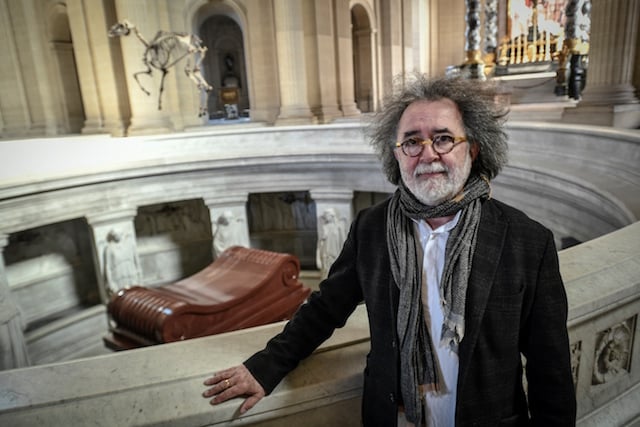The artwork dubbed “Memento Marengo” by artist Pascal Convert immortalises
Napoleon’s loyal steed, who bore the general through several battles before being captured by British troops at Waterloo in 1815.
Convert based his work on ancient traditions of horses accompanying their masters to the grave, copying the skeleton from the thoroughbred’s remains kept in London’s National Army Museum.
“I know some people might not understand this work, but it’s anything but disrespectful,” said Eric de Chassey, director of France’s National Art History Institute (INHA) that has organised a series of modern art pieces displayed at the Invalides museum complex where Napoleon is buried.
The horse skeleton “paradoxically allows a kind of rehumanisation of Napoleon,” de Chassey explained.
“Death is the reality of war. Since ancient times, we’ve had this image of warriors ascending to heaven on horseback.”
Napoleon fans blasted the piece, with historian Pierre Branda of the Fondation Napoleon calling it “grotesque and shocking” in an opinion piece for the Figaro newspaper.
Fondation Napoleon chief Thierry Lentz tweeted that he “couldn’t believe” the artwork had been installed above his icon’s tomb.
Other artists with pieces displayed at the Invalides have taken more direct aim at the emperor, with China’s Yan Pei-Ming painting the moment Napoleon famously crowned himself, while Damien Deroubaix showed him as a black slave in chains.



 Please whitelist us to continue reading.
Please whitelist us to continue reading.
“I know some people might not understand this work, but it’s anything but disrespectful,” said Eric de Chassey
I would think that 99% of the population don’t and disagree with it.
The idea is stunning. From the photographs the installation appears to be beautiful and inspiring. I commend the artist and the curators for their insight and courage to appreciate the story of Napoleon’s horse in his life, his character, his service to the Emperor, and his mortality, and then to bring that story, visually and intimately to the Emperor’s tomb. This is a powerful way to embrace and try to represent the whole of the Napoleon’s impact. It’s high time to consider the cost paid by millions of humans and animals who gave their lives to enable the political successes and failures of Napoleon, as well as the millions more who gave their lives for others we consider to be great heroes. There is more real glory in this kind of art than there ever was or will be in waging war. I hope to see the installation in person.